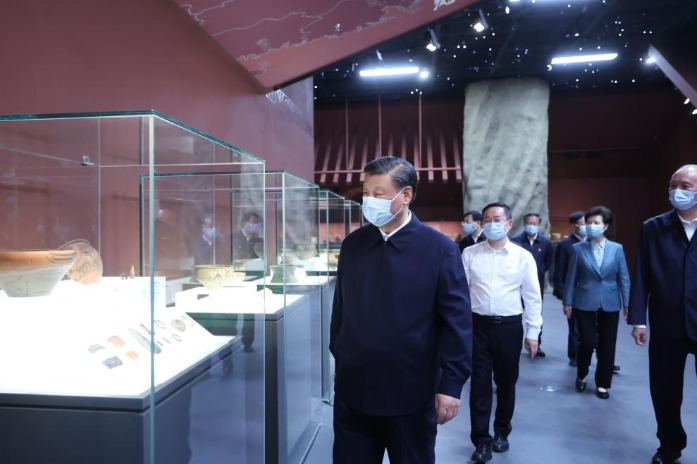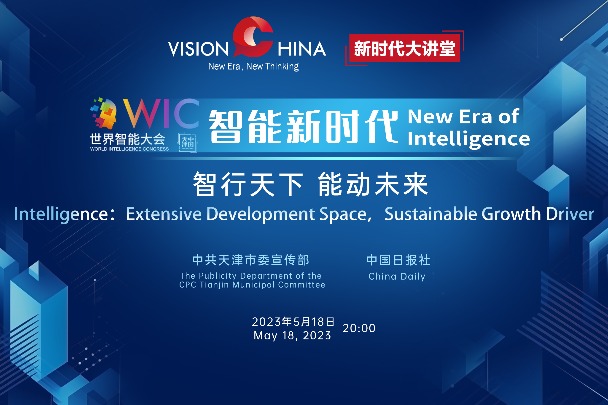Expanding middle-income earners key to long-term growth
By Cai Fang | China Daily | Updated: 2022-10-10 09:04

Among a population of more than 1.4 billion in China, there are more than 400 million middle-income earners — a massive demographic indeed. But to further tap the advantage of China having such a colossal consumer base — or in other words, market potential — and fully unleash consumption demand to better drive the nation's economic growth, it is necessary to continue to expand the ranks of middle-income earners to achieve a more well-rounded and balanced social structure having a large middle-income group and small high-income and lower-income groups. The formation of such a structure is also a milestone that China is aiming for amid its quest for common prosperity.
The key to realizing such a formation, as we see things, lies in the upgrading of social mobility.
Taking shape
Since China's reform and opening-up, the horizontal mobility of the population has been significantly enhanced, including that across urban and rural areas, provinces, industries, occupations, enterprises and geographic regions. In particular, the urban-rural mobility of labor has made a huge contribution not only to the improvement of rural incomes, but also to overall economic growth in the past few decades. Seen from this perspective, China already features a highly mobile society in terms of population and labor force.
Although incomes of both urban and rural residents have maintained relatively rapid growth in recent years, there is still a gap between the two, as measured by the country's Gini coefficient. One important reason we see for the income gap is lagging development of vertical mobility in China, which hinders the nation's building of a more equitable social structure. Building a ladder for lower-income earners to acquire better education, occupation and higher incomes still has a long way to go.
In addition, the middle-income group, said the National Bureau of Statistics, has some 400 million consumers. Considering the total population of more than 1.4 billion, the size of the middle-income group is still not large enough. Middle-income households consisting of two parents and one child earn on average between 100,000 yuan ($14,050) and 500,000 yuan annually. Such earners are still mainly urban residents, and as a group have yet to form a large consumer base strong enough to better drive the economy. This also reflects that the well-rounded social structure has not yet been formed.
Restraining factors
So what is keeping the development of China's social mobility from playing its role of pushing forward the formation of a well-rounded society?
In the early years after reform and opening-up, horizontal mobility in China was very smooth, thanks to the rapid economic growth rate, rapidly developing education system and timely adjustments in the industrial structure. There were such vast opportunities in the market that when certain groups of people enjoyed development opportunities, other groups didn't see much downside impact. However, when economic growth slows, social mobility, especially of a horizontal nature, tends to slow as well. That is because under such circumstances, social mobility will generate "zero-sum" results to some extent, as seizing of opportunities by some groups may affect or even harm others. Therefore, in general, slower economic growth has a negative impact on social mobility.
At the same time, China is facing a rapidly aging society. In 2021, the country's population growth rate — the natural growth rate after comprehensively considering births and deaths — is 0.34 per thousand, and is likely to reach zero growth this year. Also, the proportion of elderly people aged 65 and over among the total reached 14.2 percent in 2021.With the above figures and according to international standards, China as a matter of fact has officially become an aging society.
An aging society will also slow down social mobility. Seen from the perspective of individuals, as people age, they tend to pursue fewer occupational, residential and lifestyle changes, which will diminish horizontal mobility and push the macroeconomic structure of society toward an aging society. From a social point of view, an aging society will have to adapt to changes to form an elderly-friendly environment, including that of employment, entrepreneurship and living conditions, which may take longer than desired. Social mobility is also affected by an aging society as such.
It is noteworthy that a declining economic growth rate is in line with the law of changes in the development stage. Aging is an irreversible trend, and the effect of reducing social mobility to a certain extent is inevitable. However, by removing various obstacles in social and economic operations, there are still many opportunities in China to promote social mobility.
























